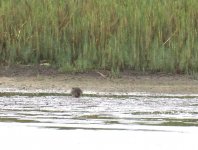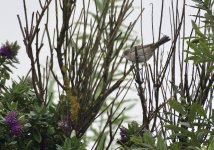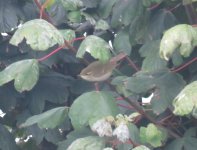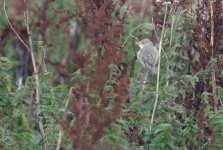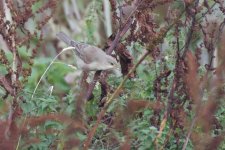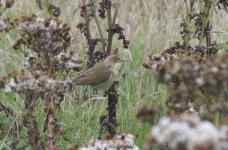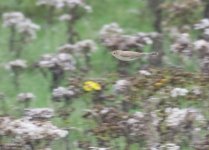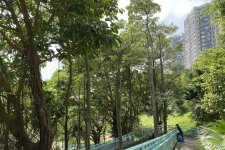Mark Lew1s
My real name is Mark Lewis
Another installment from our annual trip up to Orkney looking for rare birds. Two of us did a short version, arriving midweek and doing 5 days. Others are doing a week long trip, so there will be about 10 days coverage all together, from 8th to 18th. I'll be covering the first 5 days in most detail, but will post here with what the rest of the team get over the second part.
Wednesday September 8th
After a long day’s travelling from Aberdeen we finally hit the Orkney leg of the journey with the first of two ferry crossings - this one from Gills Bay to St Margarets Hope, on South Ronaldsay. The sea was flat calm, which makes for a nice crossing, but meant there wasn’t an awful lot happening, bird wise. A few great skuas were milling about, and there were singles of puffin and red-throated diver, and a distant ringtail hen harrier drifted between two unidentified bits of land. The undoubted highlight would have been the dolphin that I briefly saw, had I seen enough to identify it. It was most likely a Risso’s dolphin, but one that got away, unfortunately.
After a quick dash across Orkney mainland we made our next ferry journey, from Kirkwall to Sanday. Again, it was a quiet crossing. Black guillemots seemed particularly numerous, and there were plenty of shags, fulmars, and greylag geese knocking about. We arrived at Sanday with about an hours daylight to spare, and honoured a time old tradition by making our first stop at Stove - a really good bit of migrant cover in the far south of the island. We think it picks up birds as they make there way cross country, most of them having made landfall at the other end of Sanday. It seemed pretty migrant free, although there were plenty of swallows about, and stonechat appear to have bred. We were a few trips in before we’d even noted stonechat on Sanday, so to find they had bred here (and elsewhere on the island too) was nice.
We then made our way to our accommodation, noting hen harrier, short-eared owl and common Sanday corvids - raven and hooded crow en route.
Wednesday September 8th
After a long day’s travelling from Aberdeen we finally hit the Orkney leg of the journey with the first of two ferry crossings - this one from Gills Bay to St Margarets Hope, on South Ronaldsay. The sea was flat calm, which makes for a nice crossing, but meant there wasn’t an awful lot happening, bird wise. A few great skuas were milling about, and there were singles of puffin and red-throated diver, and a distant ringtail hen harrier drifted between two unidentified bits of land. The undoubted highlight would have been the dolphin that I briefly saw, had I seen enough to identify it. It was most likely a Risso’s dolphin, but one that got away, unfortunately.
After a quick dash across Orkney mainland we made our next ferry journey, from Kirkwall to Sanday. Again, it was a quiet crossing. Black guillemots seemed particularly numerous, and there were plenty of shags, fulmars, and greylag geese knocking about. We arrived at Sanday with about an hours daylight to spare, and honoured a time old tradition by making our first stop at Stove - a really good bit of migrant cover in the far south of the island. We think it picks up birds as they make there way cross country, most of them having made landfall at the other end of Sanday. It seemed pretty migrant free, although there were plenty of swallows about, and stonechat appear to have bred. We were a few trips in before we’d even noted stonechat on Sanday, so to find they had bred here (and elsewhere on the island too) was nice.
We then made our way to our accommodation, noting hen harrier, short-eared owl and common Sanday corvids - raven and hooded crow en route.




